25 Oct 3 Years of Vegetables
Iam professional cyclist from Australia. I race for the specialist German track and criterium team the Maloja Pushbikers.
Over the past five years, I’ve dedicated my career to travelling and racing overseas. From Asia to Europe, across the U.S., and back again, I’ve raced almost everywhere.
And I take just as much pride in landing in a new country as I do in throwing my hands in the air. My love for the sport transcends winning and losing. I choose to instead bask in the beauty of exploring different cultures, language, undiscovered training roads, and the incredible, infinitely interesting people I meet along the way…
Road to a Plant-Based Diet
Several years ago, while I was based in Bethlehem, Pennsylvania, I made the decision to remove animal products entirely from my diet.
I have always felt a certain affinity to animals. They’re not malevolent or cruel, wicked or corrupt. They’re just as they always have been. I’m a sensitive soul and have always been bothered by the mistreatment and distress of animals to the point that I can’t bear to watch even veterinary television programs.
But for the majority of my life, I fit into the category of people who don’t like to consider how the meat actually arrived on our plates. What an abattoir is or where veal comes from wasn’t something I’d considered.
Like many athletes, I considered vegetarianism to be too restrictive and also too difficult to maintain and to receive sustenance, which would ultimately negatively affect my performance.
I sympathized with vegans and vegetarians, convinced that one day I would follow their path—just not yet and not at the expense of my career. So, I tuned out, put my hands back in front of my eyes, and ate my dinner.
It wasn’t until summer 2015, when I was living in the U.S., that I realized it didn’t have to be a sacrifice. I could transform my body and continue to compete on a world level. I could even be better even than I’d been before.
When people hear about my diet, they always ask a lot of questions. Here are the most asked:
1. How did you start?
It was in my first season of racing the track in Trexlertown, Pennsylvania, that I started to become more mindful of my diet. I generally ate healthy, clean food at home. But it wasn’t until I started living in my own apartment that I began to slowly alter my eating habits.
The change at first was subtle. I’d always been skeptical of dairy and had gradually transitioned from full cream to skim to almond and cashew milk before I left Australia.
Red meat was expensive compared to chicken. And aside from salmon, I never really craved fish to begin with.
My shopping cart for my first few months in the States normally consisted of fresh fruit, vegetables, legumes, chicken, cheese, and eggs. With the exception of the occasional Chipotle visit, I rarely ate takeout and preferred to cook at home. With the combination of hot and humid conditions, great training roads, and eating clean food, I found that living in Trexlertown was the leanest I’d been all year.
By early August, all the athletes who’d been racing at the velodrome had to leave the apartments at the university to make way for the students to return from summer break.
I then moved in with my partner at the time who’d been vegan for more than 10 years. And I quickly assimilated and subconsciously began to follow the diet by simply eating whatever was in the house.
Suddenly, the daunting task of rapidly changing my diet had been removed. With subtle changes throughout the season, the only things I seemed to be removing from my diet were chicken and eggs.
The U.S. is progressive and by far leading the way in its vegan options both in meat substitutes and dairy-free options (cheese, sauces, yogurt). So, the gap was seamlessly filled and grocery shopping was relatively easy.
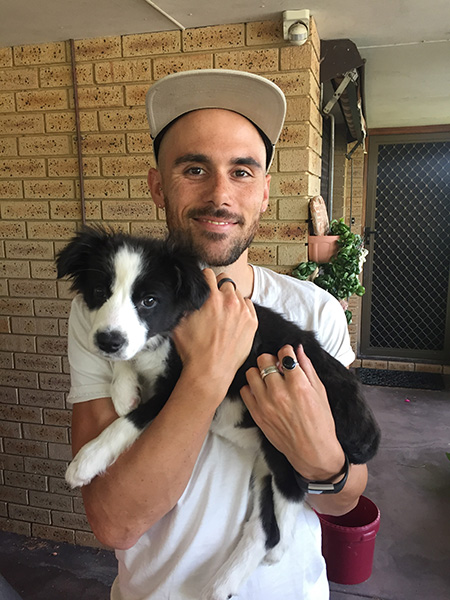 I removed the veil from my eyes and learned the truth about factory farming and the widespread exploitation of animals I’d been avoiding. I educated myself on the foods I could eat and was proud of the small contribution I’d been making to the livelihood of animals.
I removed the veil from my eyes and learned the truth about factory farming and the widespread exploitation of animals I’d been avoiding. I educated myself on the foods I could eat and was proud of the small contribution I’d been making to the livelihood of animals.
I still remember the last time I knowingly ate meat—you can never really be sure that tofu is tofu while in Southeast Asia. It was a pork burrito from Cali Burrito in Allentown, Pennsylvania, on August 17, 2015. I’d been barely eating meat at all by this stage, so I don’t know why I even ordered it. But unbeknownst to me, at some point along the way, I’d lost my taste for it. That was my line in the sand, and I haven’t crossed it since.
For the next 10 to 12 months, I followed a strict vegan diet. I was meticulous in checking labels and grilling waitresses about the ingredients of their … whatever.
What most people don’t realize is a vegan diet doesn’t just exclude meat (red meat, poultry, fish, seafood), dairy (milk, yogurt, cheese, ice cream, chocolate), eggs (no Benedict, sorry). It also excludes things like gelatin (candy and jelly), certain beers and wines, and particular breads and pastas.
Although I tried my best to avoid it, you inevitably end up eating something that has an animal product in it, especially in the beginning when you’re late to the party. In most cases, it was a sauce or dressing that was made with dairy or egg as a thickening agent. The problem with this was I would feel absolutely miserable and upset with myself over a simple human mistake.
Traveling became difficult because as an athlete, I couldn’t starve myself in defiance at not being able to find something to eat in the airport. It became exhausting and emotionally draining.
Eventually, I made the decision to loosen my fixation and strict vegan label. I began to focus instead on just doing the best I could and let go of the imaginary scorecard. For me, it was never intended as a competition or a get-lean-quick scheme. It was for the love and morality of animals. Once I made this adjustment, I was much happier and released myself of the unnecessary stress I’d created.
I quickly learned that those who embark on the vegan police journey are doing it for conflicting reasons. They inevitably falter, turn away more people than they welcome, and stunt the development of widespread veganism in the process.
It’s so important to have a healthy relationship with food, especially as an athlete. Feeling guilt or shame after a meal is a slippery slope. I continue to avoid all meat (which includes fish and seafood), eggs, and most dairy products. But I no longer beat myself up over minor ingredients of dressings and baked goods. I prefer the plant-based title and have adopted it ever since.
2. Did it affect your performance?
Honestly, this is probably the most common question I’m asked. Strangely enough, I feel that the majority of the time, whoever asked this is standing there with a sheepish grin across their face and is expecting a negative answer.
But the truth is, hand to my heart, it was all positive. I only got better. There are several factors to consider. First, when you start following a vegan or vegetarian diet, you naturally stop eating out as often.
And for a lot of people, this is already a significant improvement because you start preparing all your own meals and ease up on the added sugar, salt, oil used by restaurants. In my years away from the sport, I’d hit the gym to cure my insanity. And despite being back on the bike for five years, at the time, I still held a lot of my original muscle, especially in my upper body.
In general, athletes seem to exaggerate the amount of protein they require. So, while I was never deficient, the reduced protein intake saw me rapidly lose weight (almost entirely muscle) that no longer served me. I still haven’t set foot in the gym for eight years. And even now, I still retain a lot of the muscle—sorry, not sorry. But I’m a lot finer than I was circa 2010 to 2015.
With the reduced race weight, another interesting thing happened. My recovery and power-weight ratio went through the roof. Suddenly, tight criterium courses and repeated sprint efforts didn’t leave me as fatigued as they previously had.
Gradually, I became more versatile and was able to alter my riding style. No longer defined as a one-trick pony at the end of a road race or scratch race, I was able to race the way I’d always wanted. I could be aggressive, attack the race, and if it didn’t work out, I still had the speed and freshness in the legs for the gallop.
As the years went on, I became more suited to undulating courses, points races, and breakaways, rather than going all in for just the bunch sprint. Naturally at a lower weight, my max wattage in a sprint lessened. But at the expense of being a more versatile rider and lugging less weight around, the transition was worth it. I’ll take the improved recovery and veins in my thigh over the extra 50w and blood in the lungs back in the hoop group.
3. But where do you get your protein?
Now, to the second-most common question people love to ask the hippies: Where do you get your protein? Honestly? The same place all the other athletes do: protein shakes. Sorry to disappoint you, but almost every professional athlete whom I’ve come across has protein in their hands after a hard training session or race. And vego athletes are no different—just substitute peas or soy for whey.
I always travel with my protein shaker in my bag for races and track sessions. And it’s always the first thing I go for when I get home from a solid training session on the road. That initial 30 grams of protein directly after the final effort is the most important protein consumption of the entire day. Miss it and you’ll feel it in the morning.
I think the real question people want to ask is: Where else do you get your protein?
For that, I look to green leafy vegetables and the meat substitutes. These range from tofu to vegan patties and “fake meat.” I can feel the visible eye roll when you hear that a lot of us eat “fake meat.” But the truth is, we don’t just want to eat mush.
Having something to put in a sandwich, wrap, or mix into a salad with a bit of texture is important. Not to mention, a lot of these patties have upward of 15 grams of protein and a quarter of the fat of their meat equivalents.
I feel I became a vego at the right time because every day, there are more and more options in supermarkets and also specific cafés and restaurants that serve vegan options. Australia is still behind some of the more progressive countries like the U.S. with vegan and vegetarian foods. So, it still feels like it can charge an arm and a leg, but we’re getting there slowly.
Once I’ve met the initial 30-gram requirement after a training session, I chip away at the remaining total (estimated 1.2 to 2 grams per kilogram) throughout the day. And it isn’t as difficult as it sounds when you combine breakfast, lunch, dinner, and snacks.
4. What do you eat in a normal day?
Depending on which country I’m currently living in, my breakfast seems to vary. Australia has terrible dairy-free milk. But for the most part, the rest of my day is fairly similar. When I’m living in the States, a normal day’s food diary looks something like this…
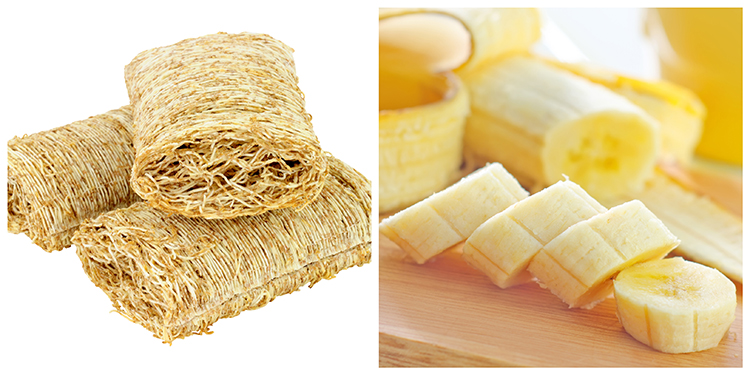 Breakfast
Breakfast
- Shredded wheat (three biscuits).
- Almond or cashew milk.
- Banana.
- Agave syrup (vegan substitute for honey) and cinnamon.
- Black coffee.
Despite all the delicious food in the U.S., I try to stick to the same breakfast rather than dive into all the gluten bagel goodness or ridiculous sugar-packed cereals. I almost always train first thing in the morning. So, once I’ve eaten breakfast and had my coffee, I’m out the door and on the bike.
Post Training
- Frozen berries and banana.
- Blended ice.
- Unflavored pea protein (30 grams).
- Almond or cashew milk.
- Spinach or kale.
- Peanut butter and agave to taste.
I absolutely love smoothies and am vigilant with my recovery post ride. I’ll often blend a smoothie with frozen fruits and unflavored pea protein to meet my initial protein requirements.
When selecting a protein powder, I obviously steer clear of whey protein (milk) and instead opt for low-carbohydrate pea protein. As a general rule, if your protein tastes good, it’s probably not good for you. So, I prefer to sweeten the smoothie to taste with peanut butter (good fat) and either agave or maple syrup.
Lunch
- 1 to 2 burrito wraps.
- Spinach, tomato, onion, avocado, and cucumber.
- Tofu, meat substitute, or pinto beans
- Hot sauce.Occasionally vegan cheese option like Tofutti cream cheese.
If I had the same lunch for the rest of my life, I’d die a happy man. It’s incredibly simple and easy to prepare as with most of my meals. I like to add as much salad as possible and add tofu or a meat substitute for protein, pinto, or black beans, which have high satiety and fiber content.
Dinner (Race Day)
- Stir-fry
- Tofu, garlic, and onion
- Broccoli, corn, and pak choi (Chinese vegetable).
- Stir-fry sauce.
- Served on brown rice.
This dinner is a very nutritious meal in homage to my Asian heritage. It has crushed garlic for the immune system and a variety of green leafy vegetables, such as broccoli, pak choi, or klang, for iron. Basically, any vegetables left in the fridge can make it into this dish. Brown rice, although it takes a little longer to cook, yields a more favorable nutritional profile.
Dinner Options (Rest Day)
- Soup (vegetable, tomato, etc.).
- Big salad and meat substitute.
- Lettuce cups with wrap fillings.
- Stir fry or sautéed vegetables.
I’m a strong believer that your food intake should reflect the day of training you had. If I had an easier day on the bike, I don’t necessarily feel the need to load up on carbs before bed. So, I’ll normally taper off my eating at the end of the day. Occasionally, it’s worth it to reset your food stores and have a good meal, but that’s only when I start to feel flat.
Snacks and on the Bike
- Sultanas, dates, and almonds.
- Any fruit raw (apple and mango) or frozen (everything takes good frozen).
- Icy poles or ice pops for my sweet tooth.
On the bike, I like to load my pockets with natural sugars like sultanas, cranberries, and dates. I save the PowerBar gels for race day and never train with sports mix in the water bottle. It’s an easy trap to fall into, and before you know it, you lose the taste for water and are sipping carbs on the recovery ride. Frozen bananas always make a great dessert and so do blueberries. Although, I’m partial to a guilty pleasure of icy poles in the summer.
5. Do you miss meat products?
This is probably the controversial one. The truth is, I ate meat every day for 25 years. That’s a long time to associate the smell of cooking meat with food. I won’t lie and say the smell of a barbecue is any less appealing since I’ve been following a vego diet. But the difference is, I’m too stubborn to go back to eating it.
Of all the things I’ve given up, if I absolutely had to, gun to my head, had to pick one that I miss, it would probably be seafood. Occasionally, I’ll see an eggs Benedict go out to a table and think that it looks great. But I honestly don’t see myself “cracking” and running to change my order anytime soon.
Maybe if I had my own chickens on a property and they gave me little four-toed high fives that it was all good, I might consider it. But at this stage, it isn’t really a choice anymore. After three years, I don’t need to remind myself not to eat it. It comes naturally. I don’t have a few drinks and suddenly become a carnivore again. I’m proud that after three years, I’m still following a plant-based diet, in great health, and hopefully making a small difference in the world. And I’m in no hurry to give that up.
Advice for Newcomers
As with any dietary advice that you read, take it with a pinch of salt. Be kind to yourself. Calorie counting, low carb, and other fad diets are unsustainable and soul destroying. I’ve lost count of the amount of times a bike rider has told me they’re being low carb only to see them in a sugar coma surrounded by baked goods and Haribo four days later.
The most important thing as an athlete is that you’re fueling your body correctly both pre and post competition. If you need the occasional cheat day to stop yourself from falling off the band wagon, then do that! You do you.
If you do decide to venture into the world of vegetarianism, start small. If you don’t normally meal prep or even cook at all, suddenly deciding to be hardcore vegan and cook every day will probably have diminishing returns. You won’t be Jamie Oliver overnight.
Try a meat-free Monday or aim to eat less red meat in general and progress from there. Do it with a friend and support each other. Don’t become a member of the dreaded vegan police, determined to catch your friend with a drumstick hanging out of their mouth. When you do it for the right reasons, you’ll have a much higher success rate. Listen to your body and don’t skimp on nutrients.
Done properly, you shouldn’t feel weak, tired, or look like Andy Schleck.
If you’re serious about making a permanent switch, think about getting regular blood work done. If you only ever go to a doctor when you’re ill, you lack a baseline healthy value to compare with.
It’s always better to catch a deficiency early before it has the chance to develop. This is especially important with women because their iron levels are known to slip under a vegetarian diet. It’s worth noting that having vitamin C with meals helps to increase your iron absorption while the tannins in tea and coffee reduce it. As a point of interest, my B12 and iron values were identical as a carnivore (2014) and vegan (2016).
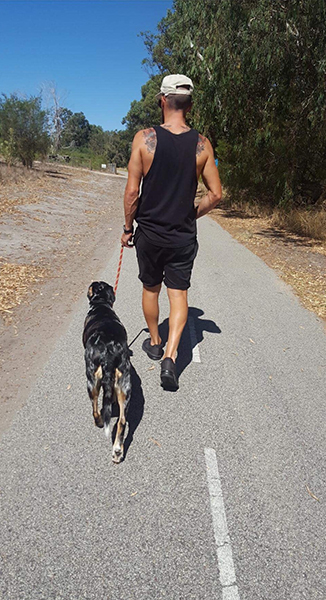 You may wonder why I don’t flood social media with PETA slogans and confronting images to invoke drastic change. At some point in my journey, I realized that the vegan warrior evangelist wasn’t for me.
You may wonder why I don’t flood social media with PETA slogans and confronting images to invoke drastic change. At some point in my journey, I realized that the vegan warrior evangelist wasn’t for me.
I don’t need to watch the documentaries or use shock horror animal exploitation pictures to try win people over and rally my friends. It’s exhausting and debilitating. It just made me too sad. Kudos to the guys on that path—you’re impregnable.
My only wish for the people reading this is that they’re mindful of where their food comes from. It’s not my place to banish someone for eating meat or shoot dirty looks at my best friend when he orders a steak.
I feel you’ll have more success by introducing your friends to vegan ice cream or having a vego dinner party. Remember, we’re all on our own journeys. “I’d be a vegan, but I like cheese too much.” Then be the vegan who eats cheese. You do you. Raise people up—don’t diminish them. I dream of a day when we can band together to abolish factory farming, trophy hunting, and animal exploitation. But maybe we have to start small.
Thanks to all the beautiful people of the world who dedicate their lives to ensuring the safety and well-being of animals. You are stronger than I’ll ever be and forever have a home within my heart.
Stephen Hall (Maloja Pushbikers)
Instagram: @StephenHallRacing Facebook: /StephenHallRacing


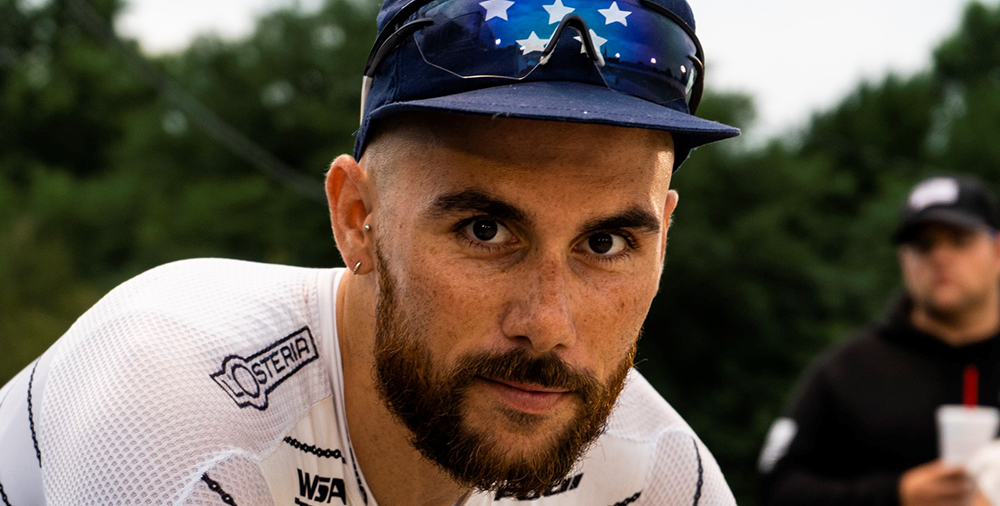
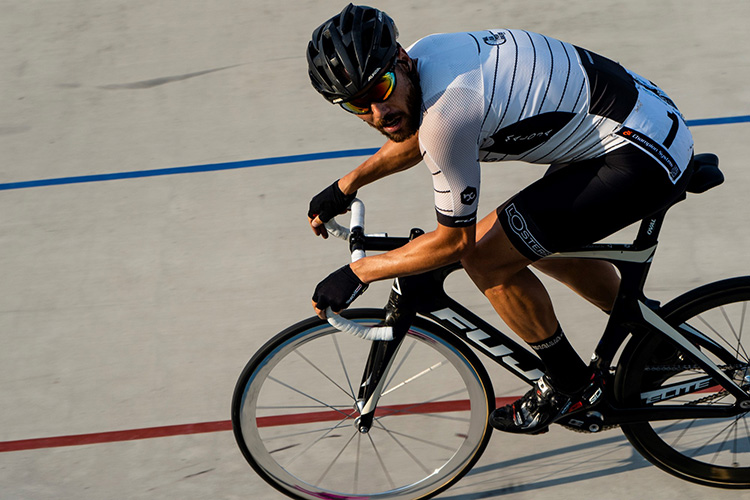
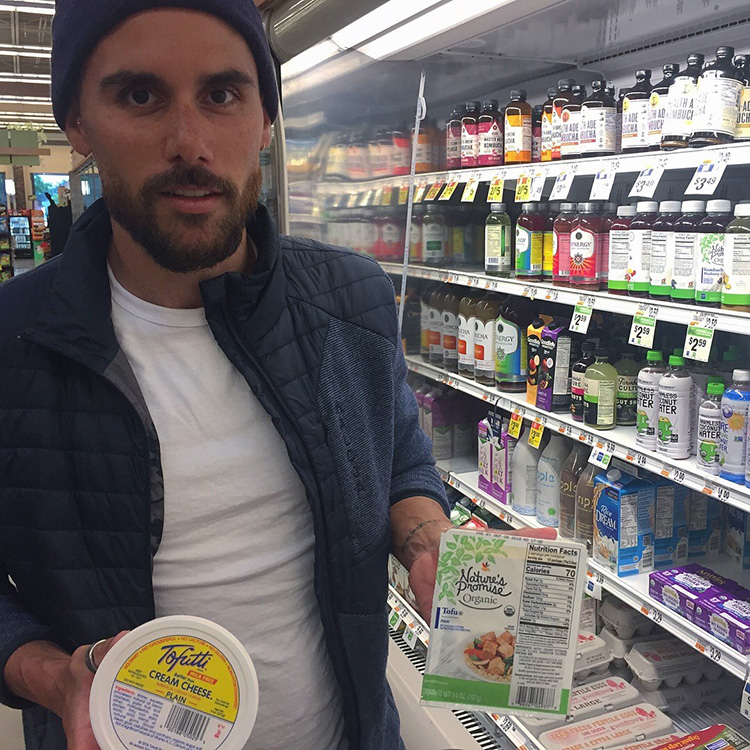
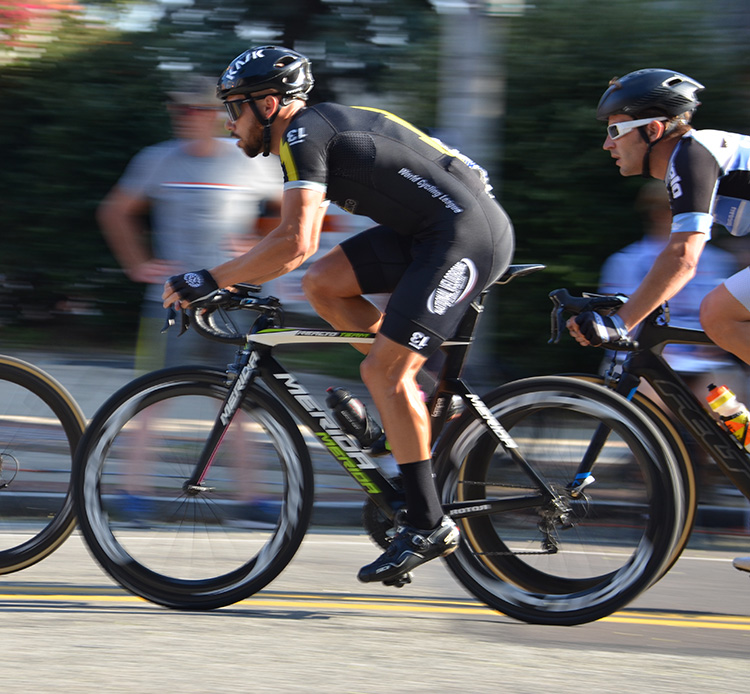

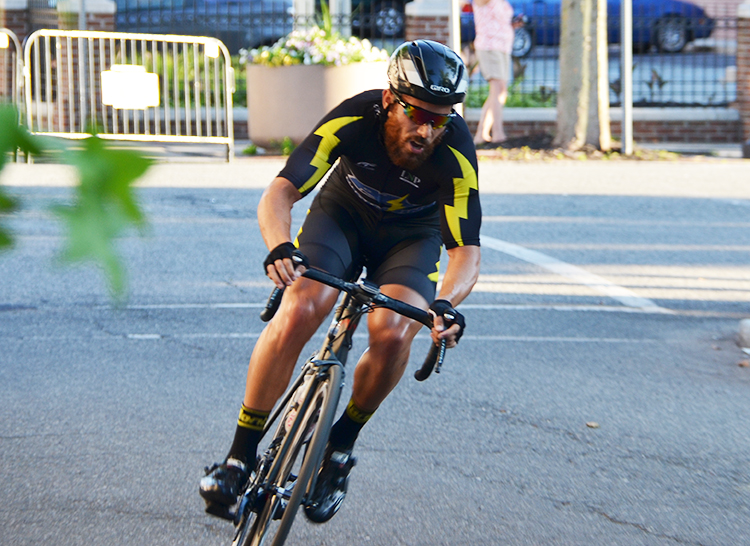
Sorry, the comment form is closed at this time.